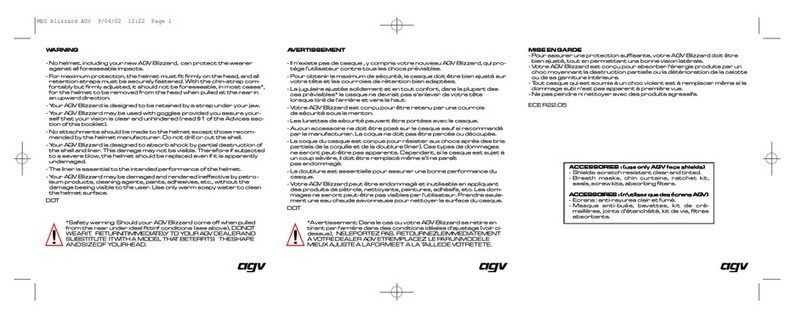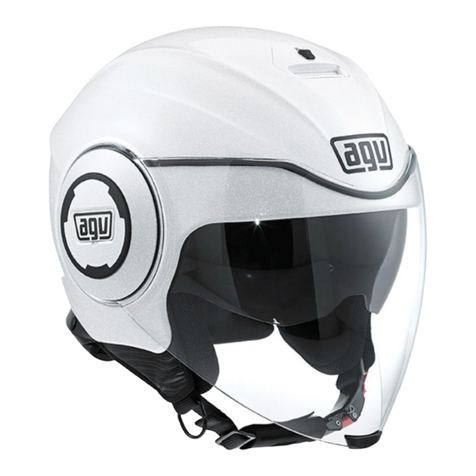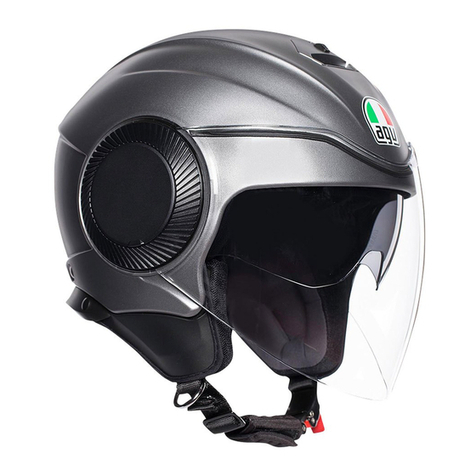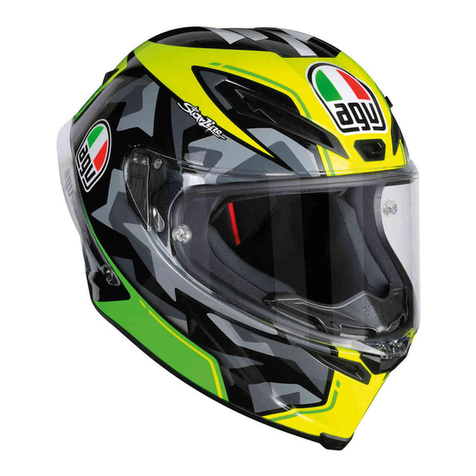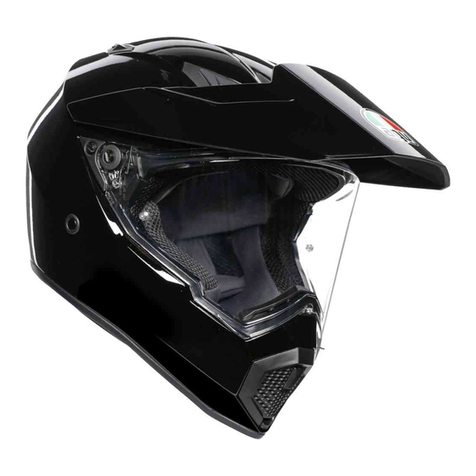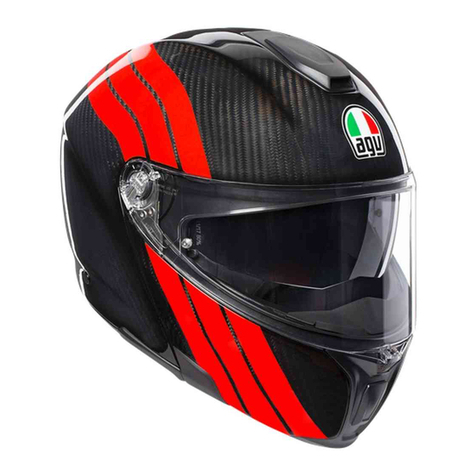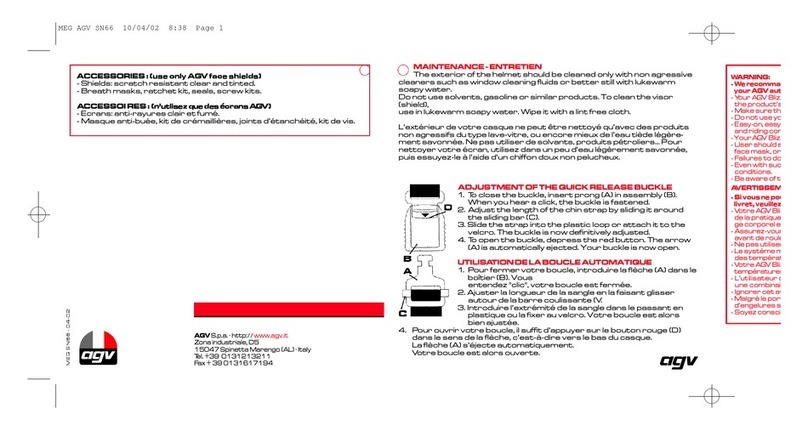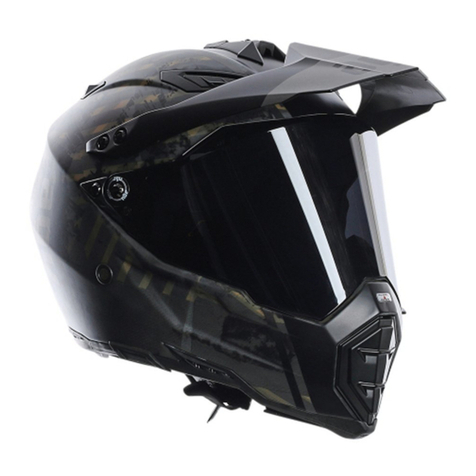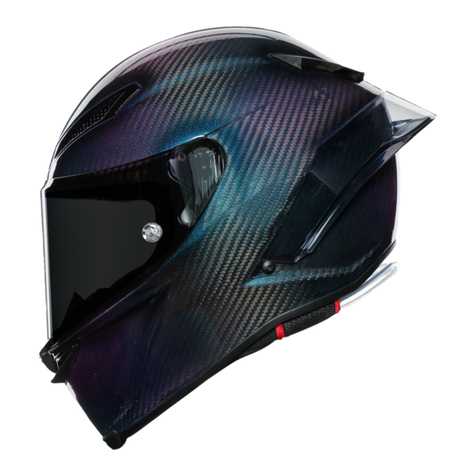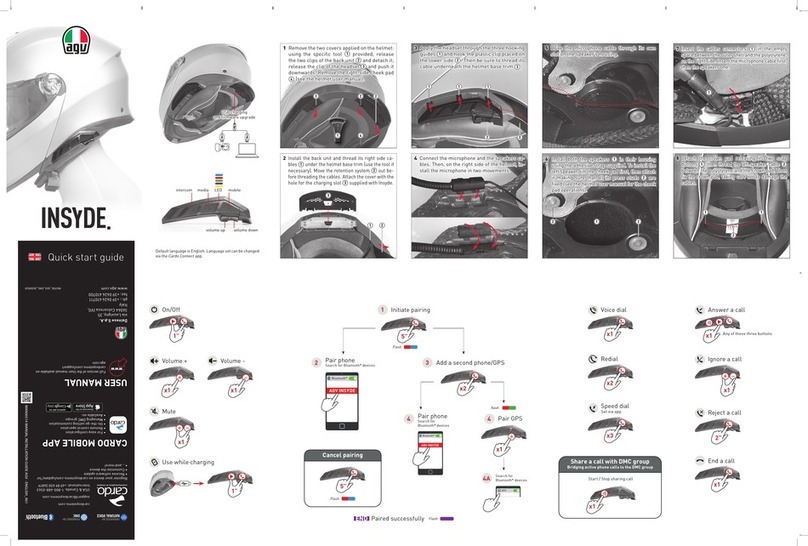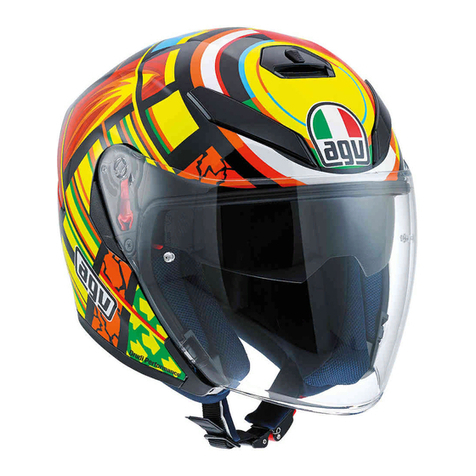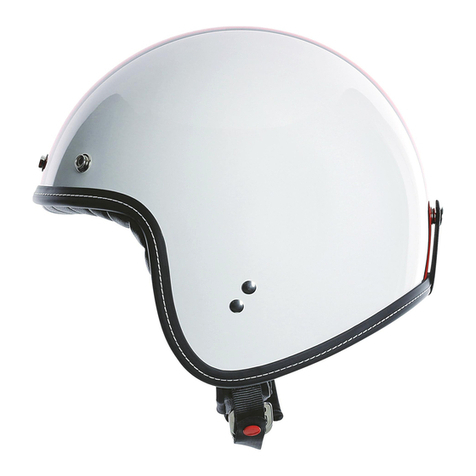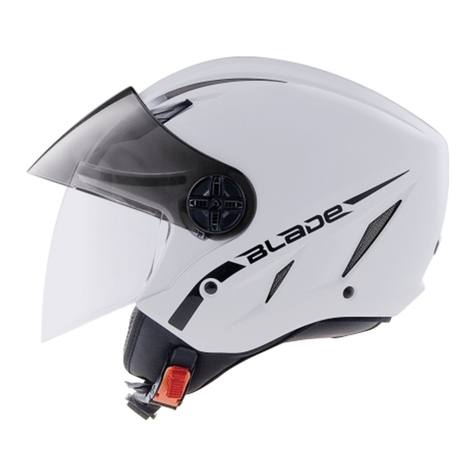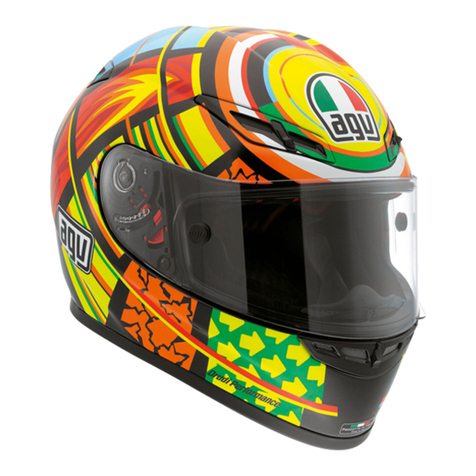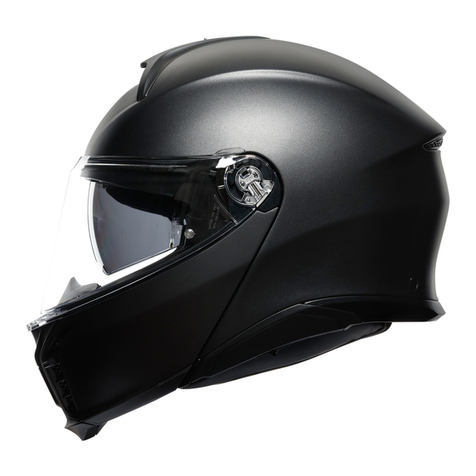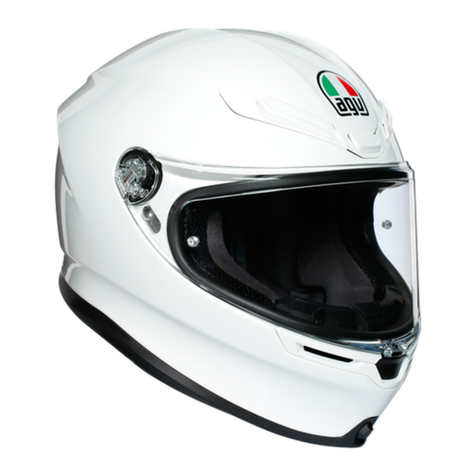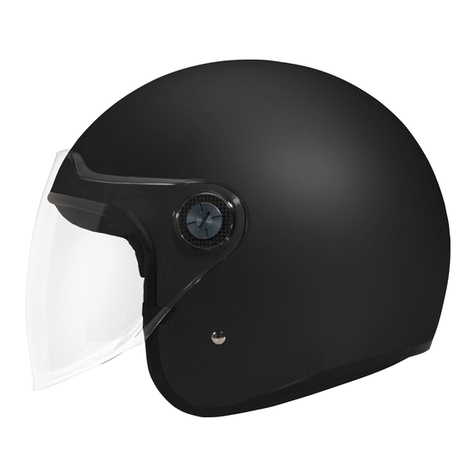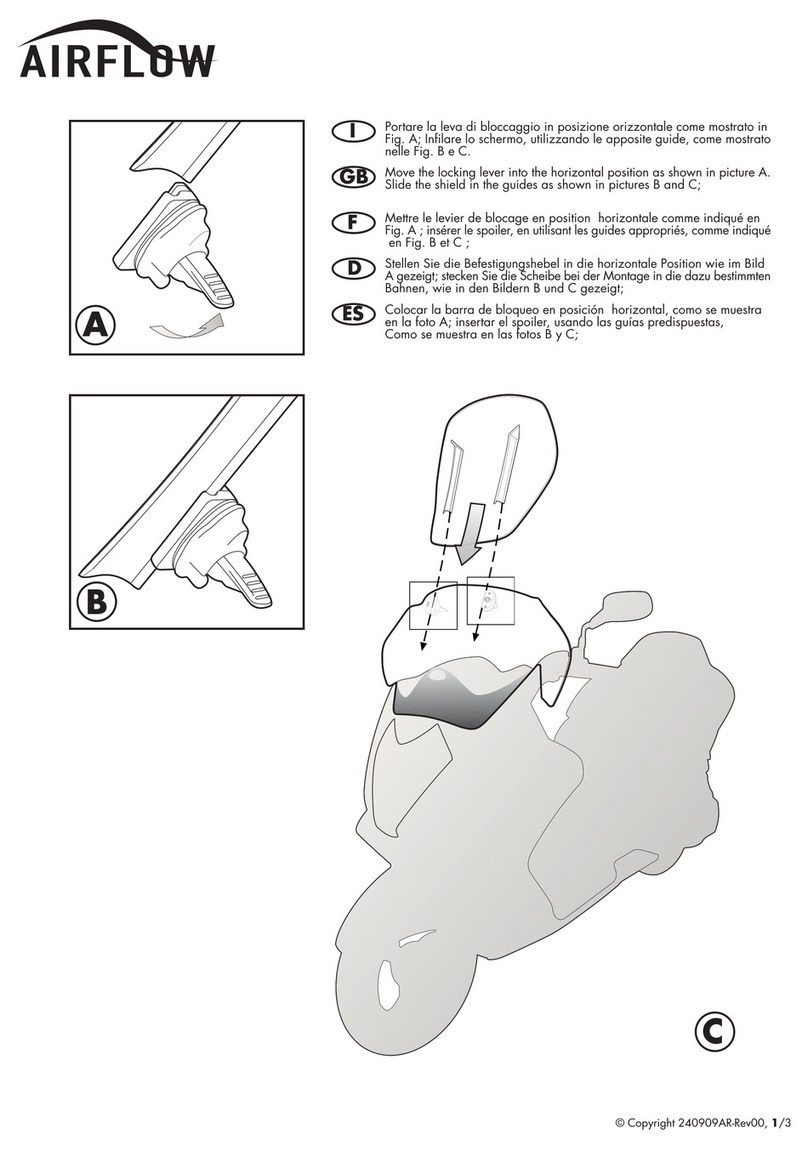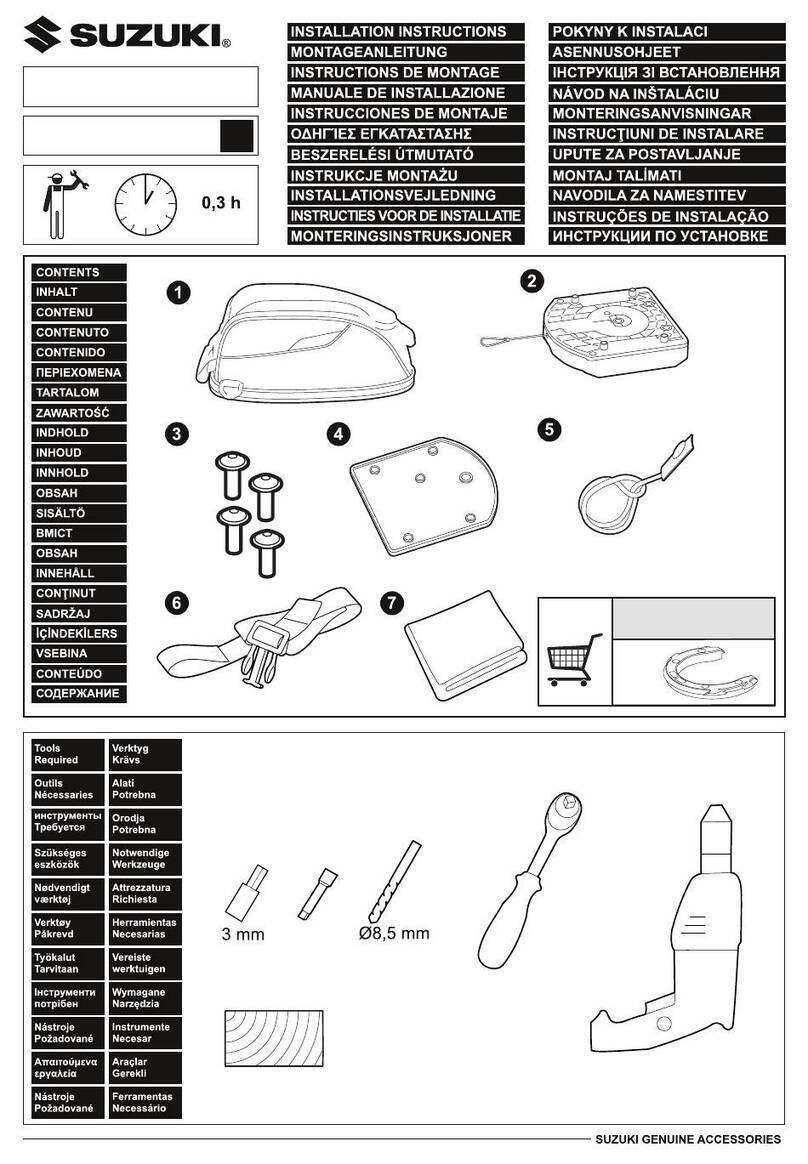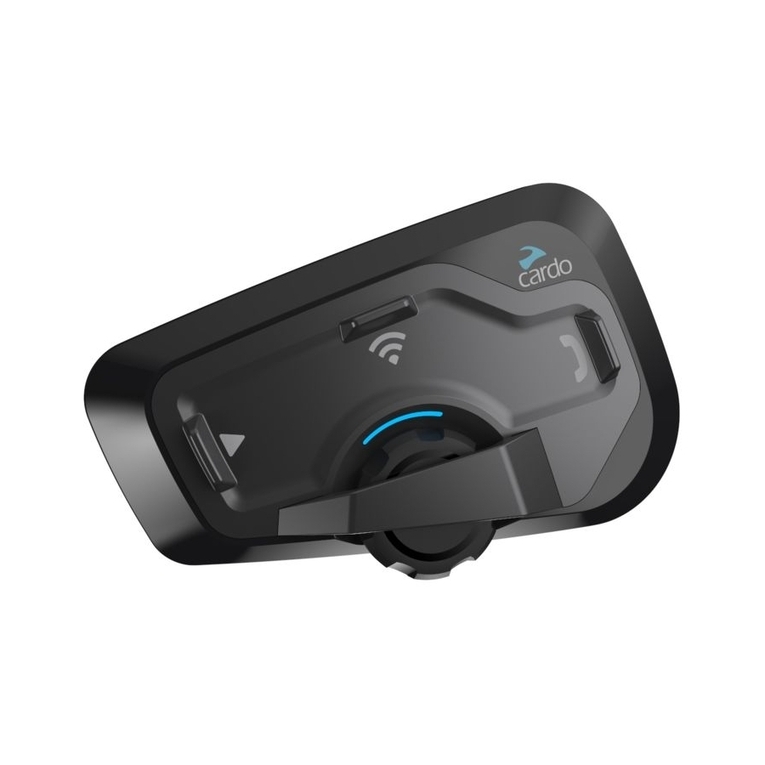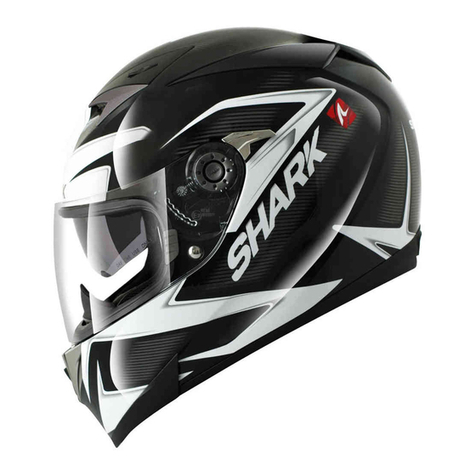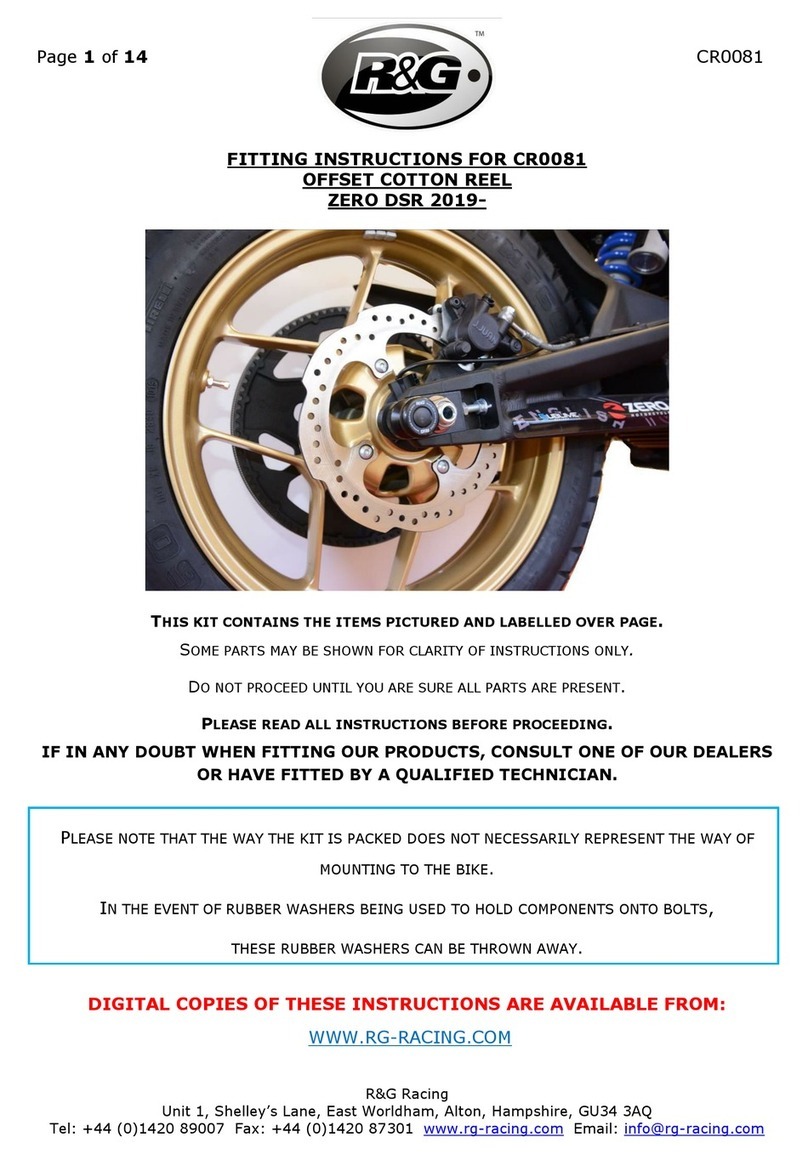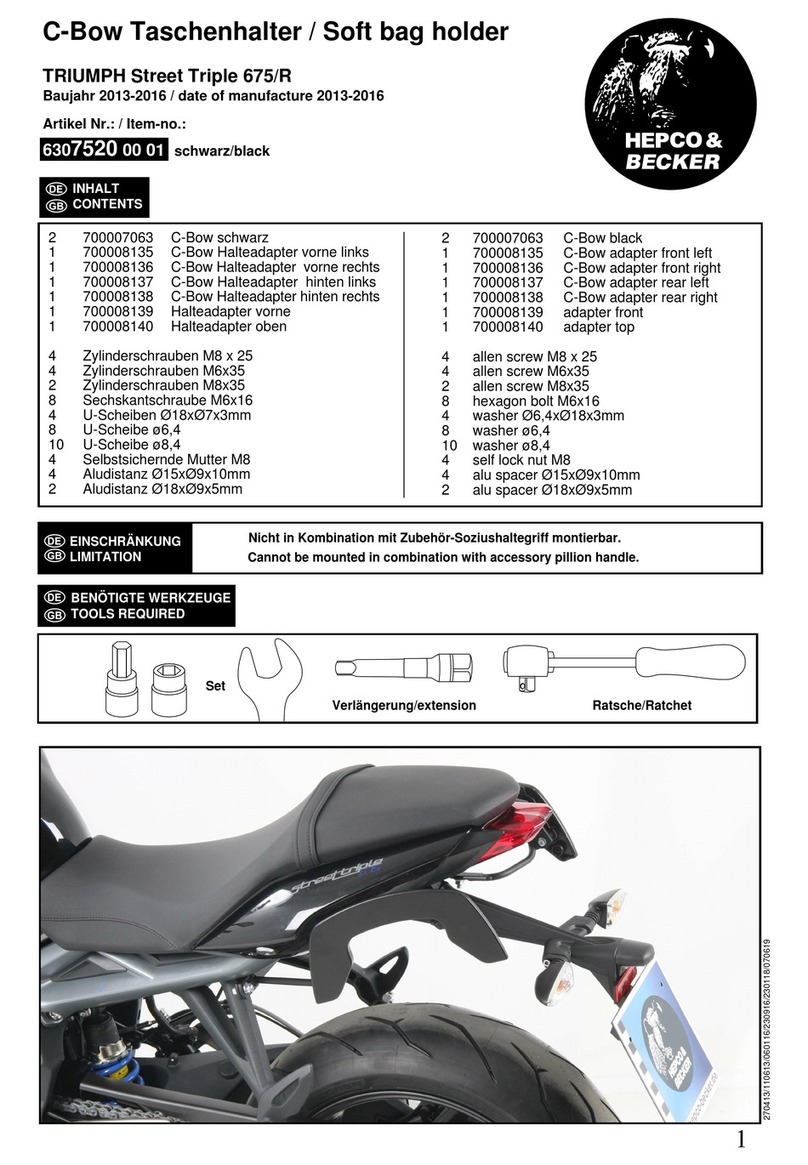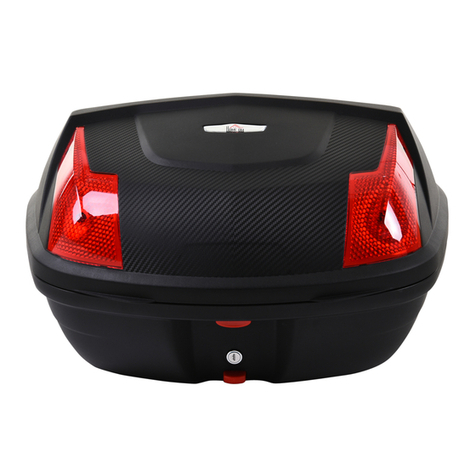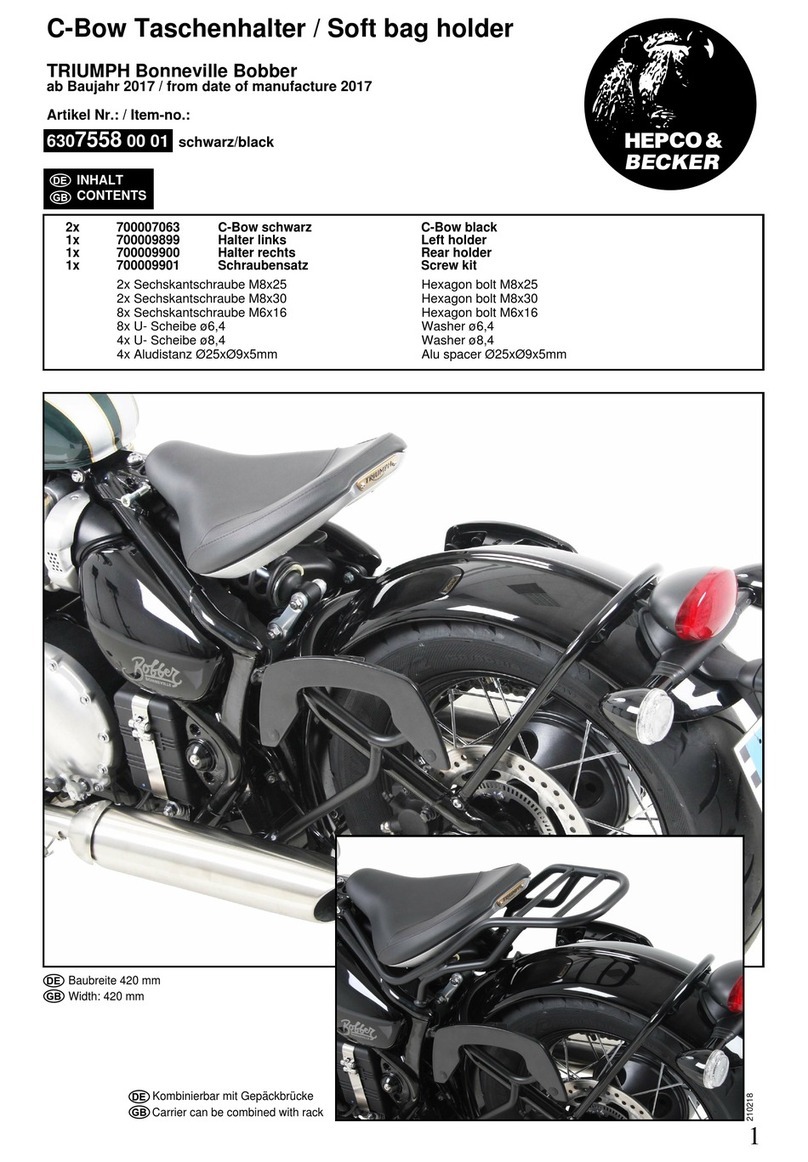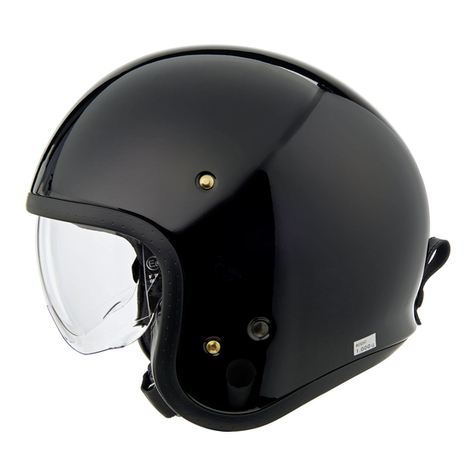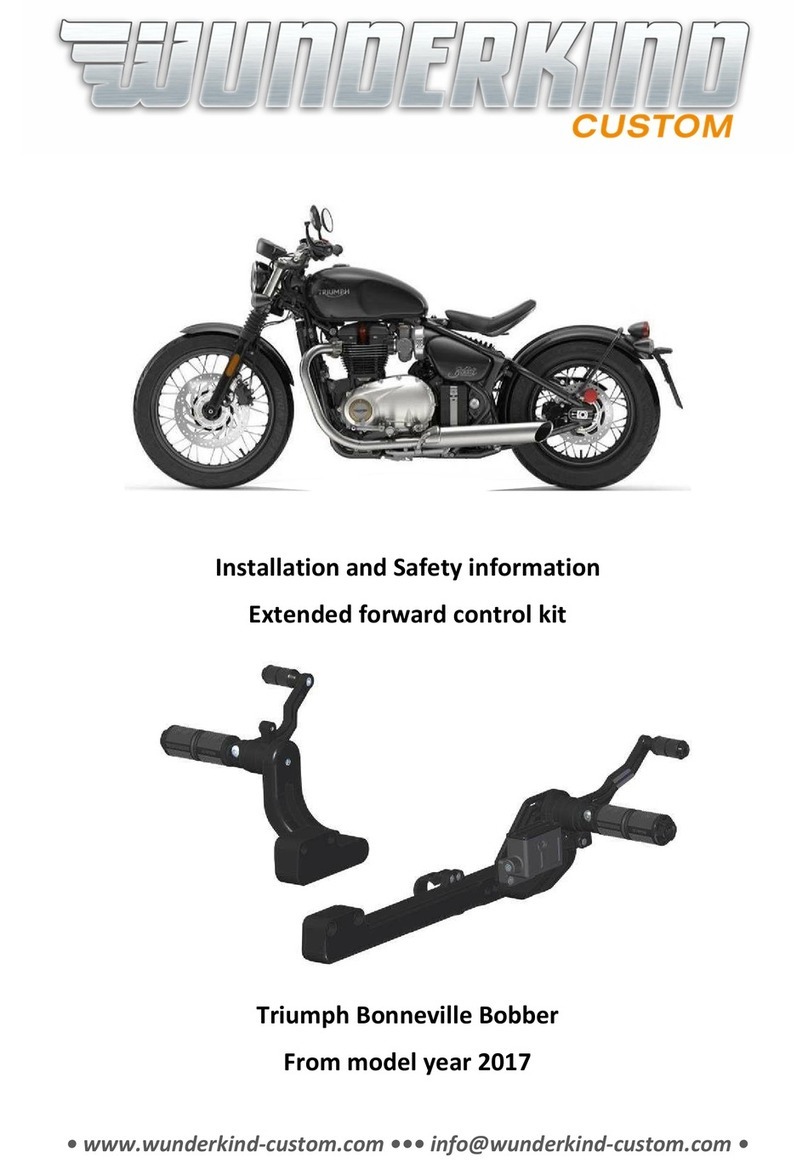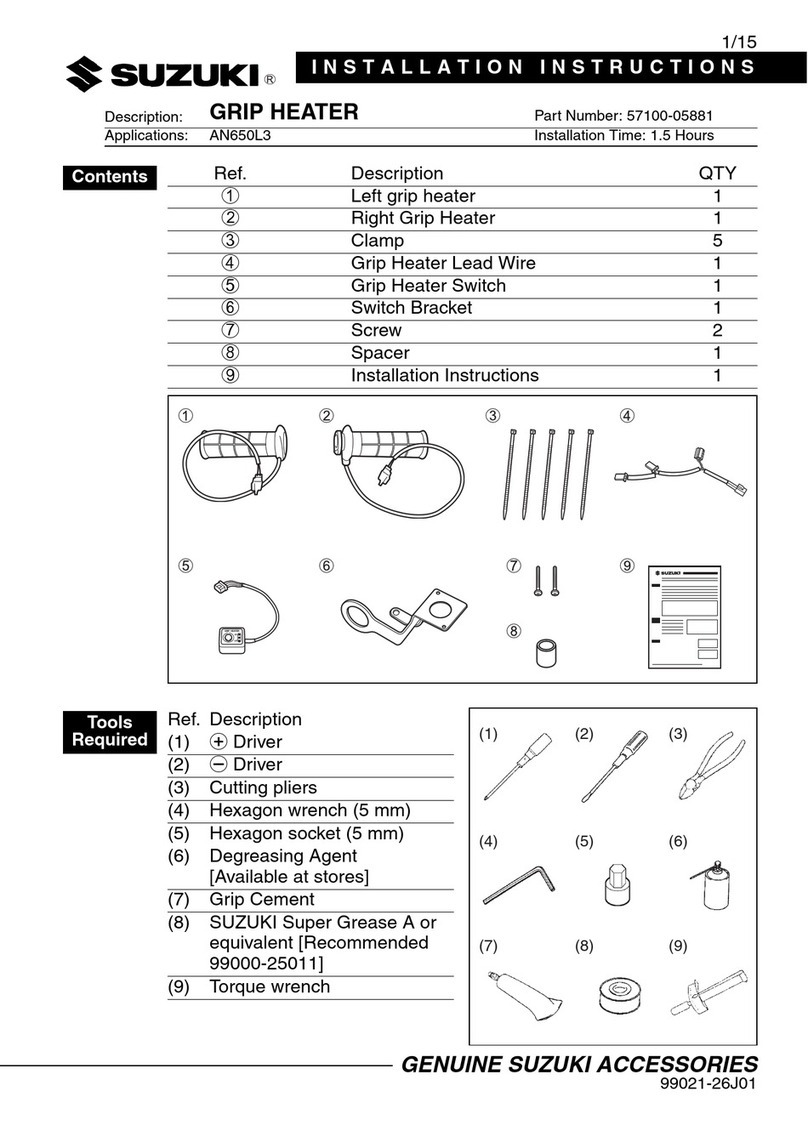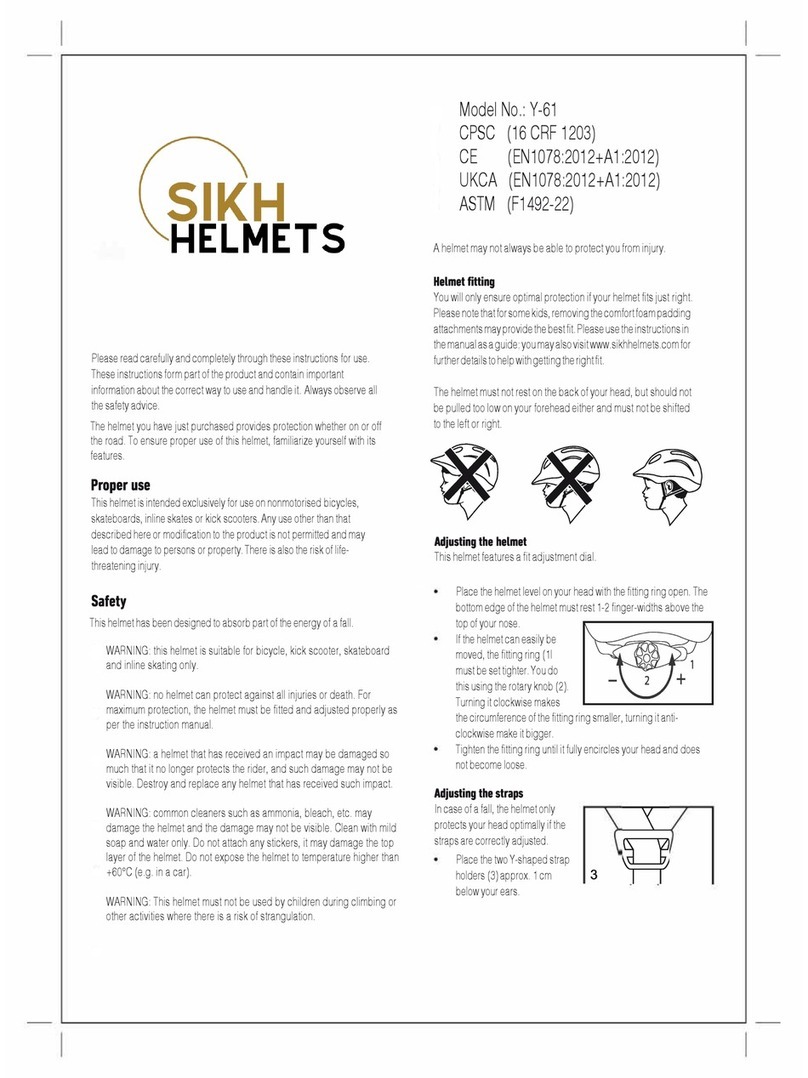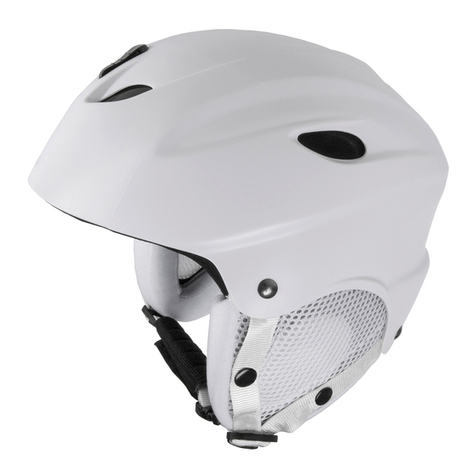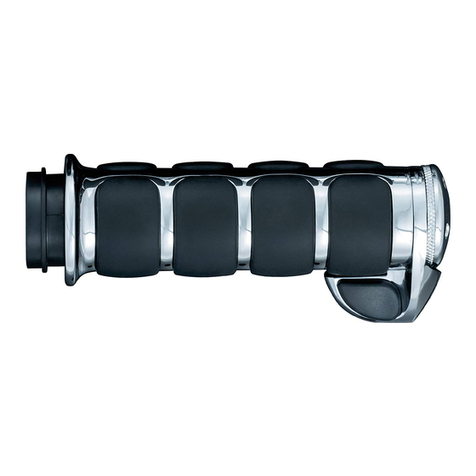9
5) ACCESSORI
Per K-3 SV è disponibile uno schermo solare inter-
no a scomparsa facilmente azionabile dall’esterno e
smontabile senza l’utilizzo di utensili per la pulizia o
la sostituzione.
5.1) Azionamento schermo parasole
Per azionare lo schermo parasole basta utilizzare la
levetta posizionata sul lato sinistro del casco a livello
del meccanismo visiera. Per abbassare lo schermo pa-
rasole, spingere verso l’alto la levetta (1). Per far scom-
parire lo schermo parasole, spingere verso il basso la
levetta (2).
5.2) Rimozione/ Installazione schermo parasole
Lo schermo parasole è in policarbonato antigraffio ed
è dotato di innesti che si inseriscono nelle sedi interne
poste a lato dei guanciali.
Vi consigliamo di eseguire le operazioni che se-
guono appoggiando il casco su una superficie
piatta.
Per rimuovere lo schermo parasole, abbassarlo com-
pletamente e sollevare la visiera fino alla totale apertu-
ra (1). Partendo da un lato del casco, fare una leggera
pressione a lato dello schermo parasole verso l’interno
ed estrarre l’innesto di aggancio (2). Ripetere l’opera-
zione anche dall’altro lato e rimuovere il visierino.
NB: Una volta estratto da un lato, non tirare o for-
zare il visierino in una direzione diversa rispetto
a quella orizzontale della guida per estrarlo anche
dall’altro lato.
Per installare lo schermo parasole occorre abbassare
la levetta di azionamento del visierino ed assicurarsi
che le guide laterali siano in posizione abbassata.
N.B. La guida sinistra si aziona con la levetta posi-
zionata sul lato esterno del casco. La guida destra
si può abbassare manualmente (3).
Partendo da un lato del casco, con la visiera comple-
tamente sollevata, inserire l’innesto dello schermo pa-
rasole nella sua sede laterale assicurandosi che poggi
sulle guide laterali (4). Ripetere l’operazione anche
dall’altro lato. Verificare il buon funzionamento dello
schermo parasole.
